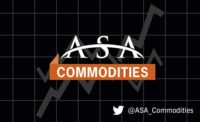CARBON STEEL PIPE OVERVIEW
As of late 2001, "steel pipe prices were at a 20-year low due to soft demand, cheap imports and excessive domestic capacity." The ITC 201 tariffs were supposed to boost prices substantially, but so far results have been mixed."While the domestic replacement cost of pipe escalated $100/net ton from the start of the year, standard pipe demand has not gone up. Major distributors, armed with capital and market intelligence, pushed their inventories to excessive levels in early 2002. These price hedge-type orders have basically delayed some of the implementation of the new higher prices in the marketplace," according to the IPD.
"In short, there is a lot of pipe in distributors' stock at the 'old cost' and not a lot at the 'new cost.' The demand for product will determine the speed of migration to the new unavoidable higher cost of goods ?p> "While we all have been taught to sell from a declining or increasing 'replacement cost structure,' the third quarter will test the intelligence of standard pipe distributors. Unfortunately, tariffs will do nothing to stimulate demand, which is the real problem for distribution right now."
Oil Country Tubular Goods: The number of oil drilling rigs operating in the U.S. peaked in July 2001 at 1,293 and fell to around 770 by July of this year. "Most rig counters are saying that we will see a continuous upswing throughout 2002, thus a more robust pipe usage is expected in this sector," said the IPD. "However, others are cautiously saying that if the OCTG market does not consume its fair share of the market, and standard pipe continues to be 'soft,' we could see a price boomerang in the fourth quarter.
CW Pipe: Domestic producers had increased prices 25% between December 2001 and June 2002, more than negating the impact of 15% tariffs. "Based on newer domestic prices, one can deduce that imports will continue to take more than 50% of the U.S. market. So, once the importers get realigned, we will be rather back where we started from, but at higher prices!" said the IPD.
ERW: Distributors are expected to see a 25% increase in ERW prices throughout the year 2002 on some ERW sizes. "A fundamental problem is the 30% increase in steel cost tariffs, but only a 15% increased in finished pipe tariffs. It's creating a lopsided economic situation for the pipe mills."
At the time of this writing, "ERW pipe mills are pretty much running full out and are concerned about meeting customer demands."
Seamless: Speculation arose that there would be a price increase in the area of $20 per ton announced after the purchase on July 1 of Northstar Steel by Vallourec-Mannesmann in a joint venture with Sumitomo Trading.
"Demand for seamless product has remained flat even in the face of increases for pressure tubing. Hedge buying has been at a minimum," stated the IPD.
FITTINGS
The nipple business proved brisk earlier in the year "based on purchasers trying to take advantage of more price increases" stemming from ITC 201. One unnamed domestic manufacturer of carbon steel nipples was rumored to have moved all nipple production to Canada.ITC 201 had little or no effect on pricing of domestic carbon steel weld fittings and flanges, of which Weldbend remains the only domestic producer. The company continues to invest in new machinery.
The American Pipe Fittings Association filed an anti-dumping suit against China on cast iron and ductile iron fittings, which were priced 40-50% less than domestic product. The Trade Commission's ruling was expected to be imminent, but there was no news to report by the time we went to press.
Demand for grooved fittings continued to be strong in the first half and were expected to continue for the balance of the year. Domestic manufacturers of grooved fittings were said to control 85-90% of the market, though they reported significant sales pressure by importers in the fire protection market.
Forged steel fittings sales were reported down as much as 8% in the first half. Domestic manufacturers controlled about 75% of market share, but imported forged steel fittings were said to be gaining more acceptance.
VALVE MARKET LEADERS
IPD's coverage of the valve market was headlined by assessment of Flowserve's acquisition of the Flow Control Div. of Invensys earlier this year. According to IPD, the world's top 10 producers of industrial valves stack up this way:
1. Tyco 6. Kitz
2. Flowserve 7. Metso
3. Emerson 8. Watts
4. Crane 9. Circor
5. Dresser 10. Velan
IPD also took note of the growing influence of China as a low-cost producer of valve parts. IPD contacted several of the leading valve manufacturers, and all were buying either castings or finished parts to be used in U.S. manufacturing of valves.
"This trend will likely continue as major valve users like General Electric Power Systems are requiring suppliers to investigate Chinese sources for all products in their effort to meet cost reduction goals," said IPD.
THE STAINLESS MARKET
The global stainless market reached a five-year low in 2001, reported the IPD. However, indicators were that recovering markets in Europe and Asia "will allow a return to the long-term trend rate of 3-5% (growth) per annum."Stainless Steel Welded Pipe
"Manufacturers are increasingly optimistic that the welded pipe market in the U.S. will experience improved trading conditions in the second half of 2002. Pressure from imports seem to be subsiding as global market alternatives develop with pricing on the rise as producers face the same supply side pressures from raw material suppliers worldwide," reported IPD.
Stainless Steel Buttweld Fittings, Stainless 150 and Hi-Pressure Fittings
Manufacturers had announced no price changes for the third quarter of 2002, although raw material price surcharges soon to be implemented threatened the outlook beyond that. Pressure fitting manufacturers said the market "is still soft."
Stainless Steel Flanges
Price increases were thought likely by later in the year due to raw material price increases.

